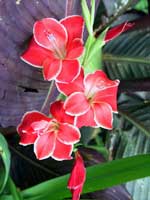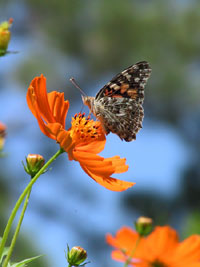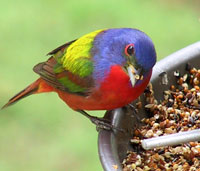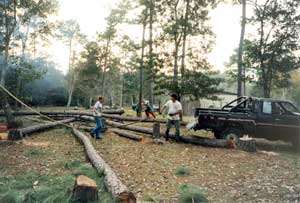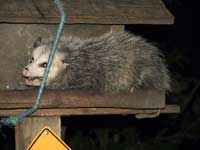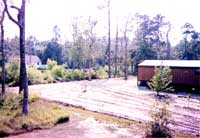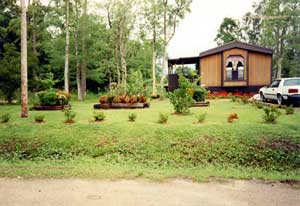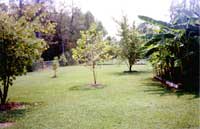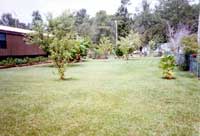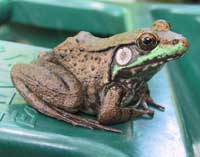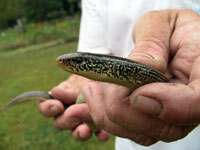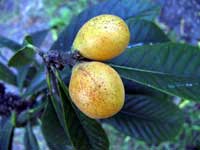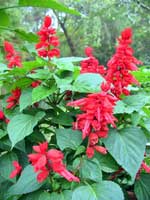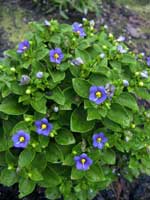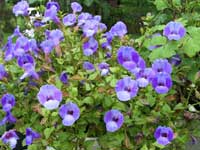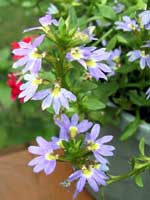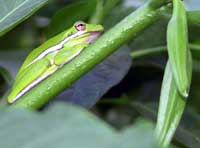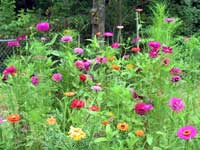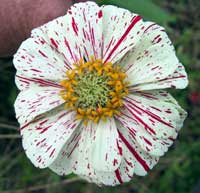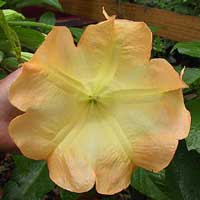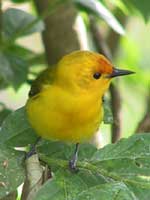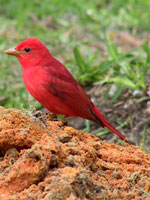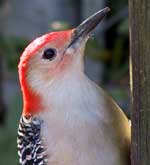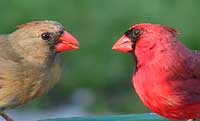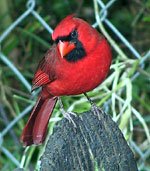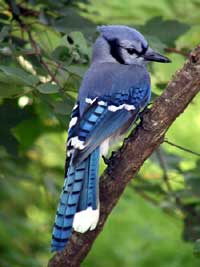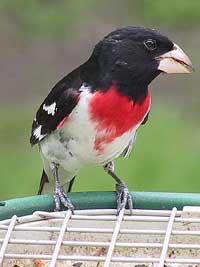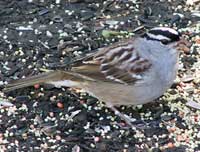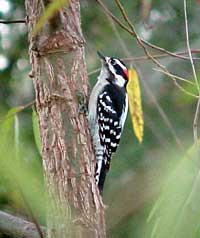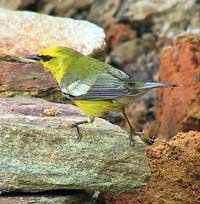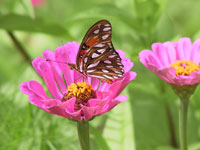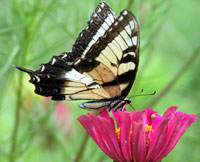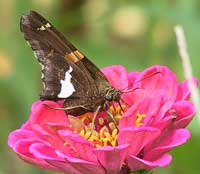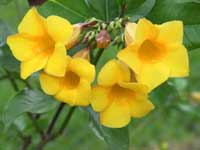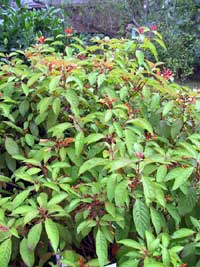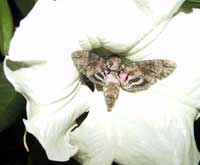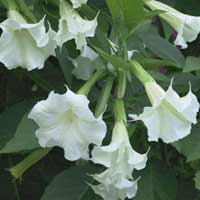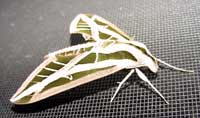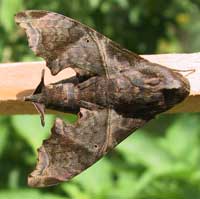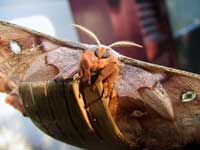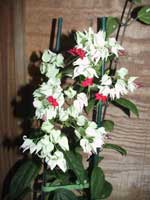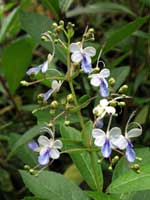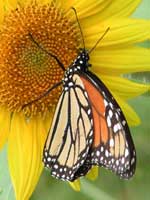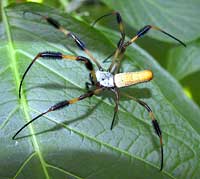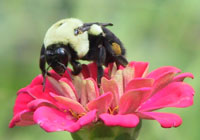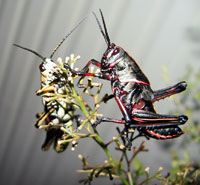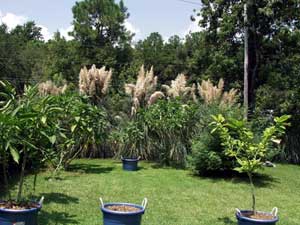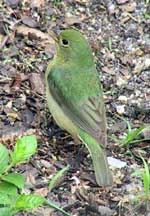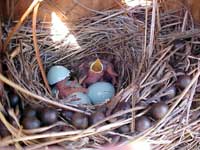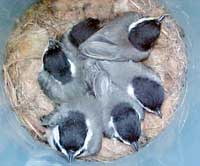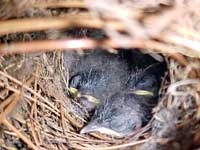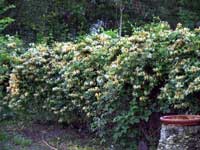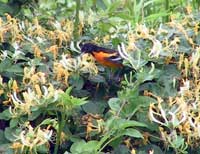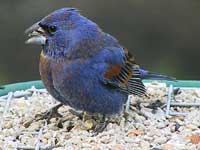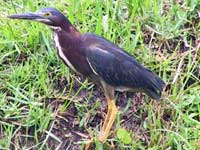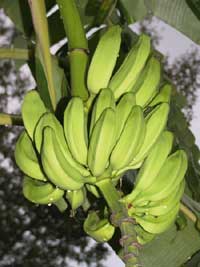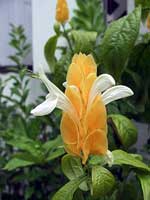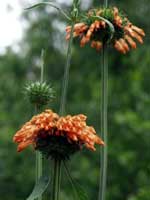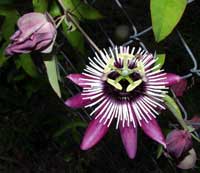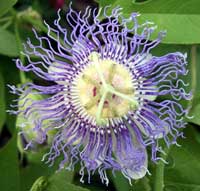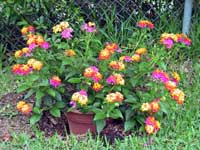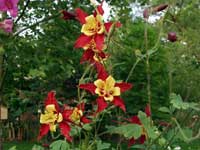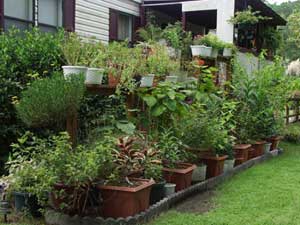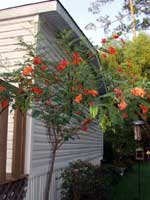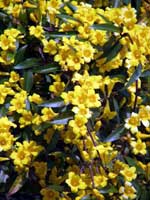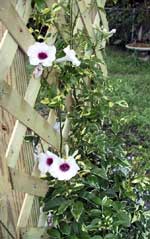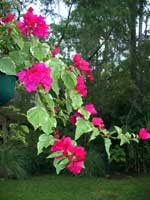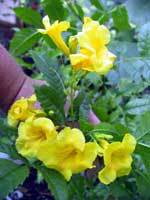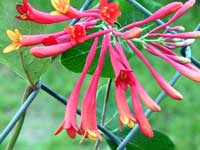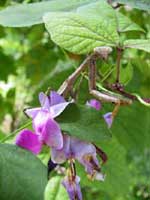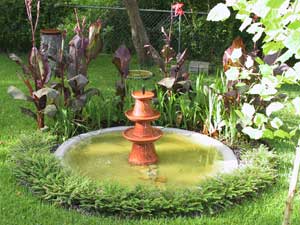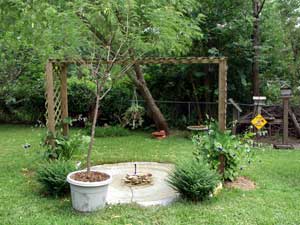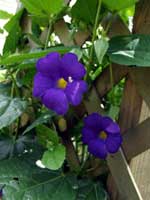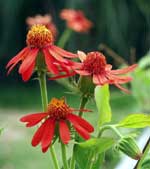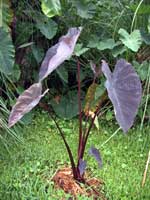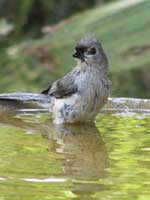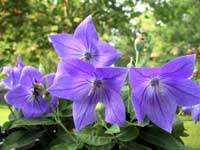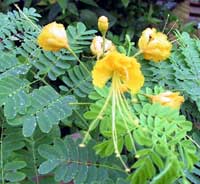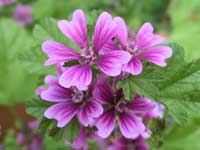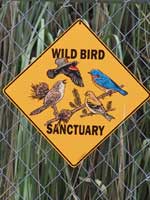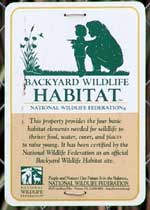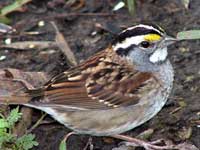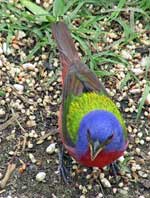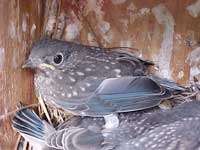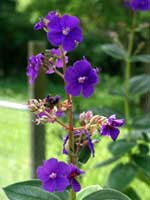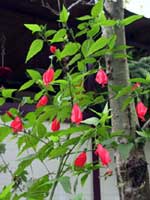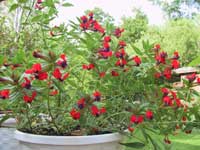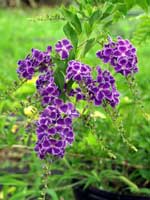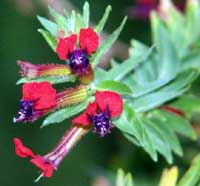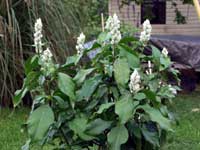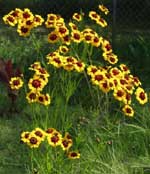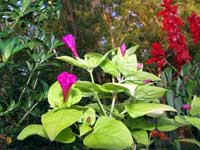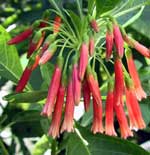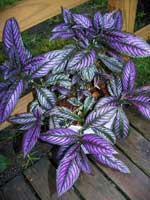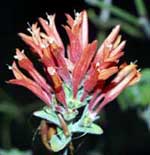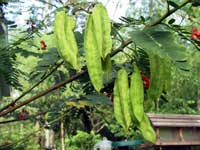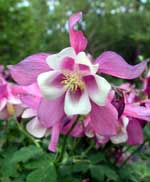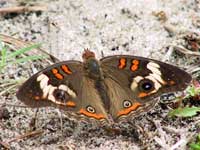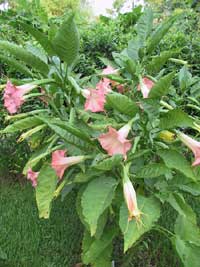My Secret Garden - Participant# 108 || 2004 Contest
Donna's Wildlife
Habitat
by Donna Mc Donald-Bailey
(Ocean Springs, Mississippi Gulf Coast, USA)
| previous participant | next participant | list of participants |
Email:
click on image to enlarge
Pictures published within Contest are property of the authors and can not be used without author's permission.
We live in zone 8b/9a and usually have very mild winters. Late January and Febuary are usually our coldest months but there have been many occasions that we are wearing shorts and have the a/c in Febuary. They are also our wettest months. Rarely we get a little snow but it is usually gone by the next day if it even last a day. Our winters are like a roller coaster. It may go down to 30 one night and go back up to 60 or 70 the next day. We occassionally get in the mid to low 20's but it doesn't last more than a few days at a time and usually gets in the 40's to 50's in the afternoon when it does. I believe our last snowfall was in March of 94 which was a real shock since we are getting into spring by then.
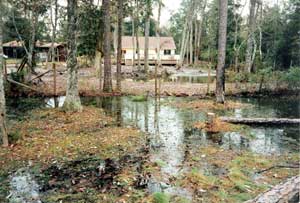 |
Then we had to get someone to remove them all. Wow the tractors really messed the property up. | 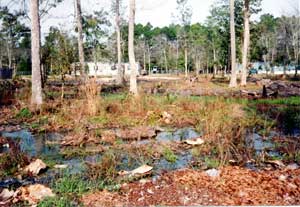 |
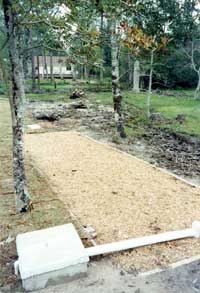 |
We used Banana trees and Pampas grass to hide the huge septic system required by the Department of Health. | 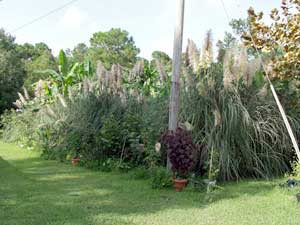 |
| I had a very large raised bed garden for several years and grew some of the sweetest canteloupes and carrots you ever put in your mouth. I also grew a 15 lb cabbage one year. We fenced it all in so our dogs could run loose. |
Salvia Splendens |
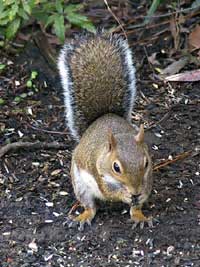 |
Planting on my property is a big challenge. I have areas from very dry to very wet and if it is not wet in summer it is in winter causing loss of plants. |
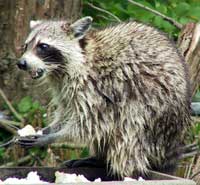 |
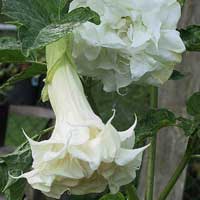 |
Now I am a container gardener for the most part. I still put things in the ground trying to get things to grow in different places. Everything does pretty well on the North East side (My Brugmansias).
|
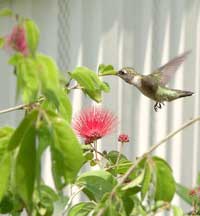 |
Then I began working on plants and trees for food for the birds, hummingbirds, moths, and butterflies etc. | 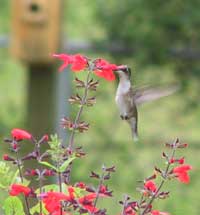 |
|
I had seen a white trumpet plant in a magazine and ordered it. It was the most amazing plant I ever had and the smell is to die for. Wow I found out many years later what Brugmansias and Daturas were and that there were many kinds. So I began collecting them and they are food for the large night moths. The Brugmansia in the ground come back each spring bigger and better. |
| They are my most prized plants next to my clerodendrum collection. |
|
Lonicera japonica (honeysuckle) |
I have honeysuckle, pampas grass, and bananas 3/4 of the way down on the east side then there is a open area for my feeding stations for the animals going back to a semi shady corner which has bananas.
|
|
Pachystachys
lutea
|
I intend to plant all my Shrimps plants, some gingers, various firespike, and 2 pawpaw trees I have in there come spring and get them out of pots. I have already planted 3 red buckeyes and 3 beautyberry there this spring. |
|
Passiflora Violacea |
Running across the southeast part of the backyard is more honeysuckle on one half and the other half (west side) which is the wildlfie area I have sword jack bean vines, cross vine, passiflora vines, assorted gingers and cannas, clitoria vines, fig tree, 2 mulberry trees, 5 hamelia patens, black cherry, serviceberry, pyracantha, and a flowering crab apple.
|
Passiflora incarnata |
|
Gelsemium
sempervirens |
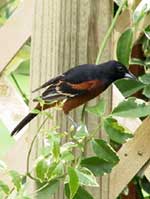 |
Coming up the back west side toward the front I have more honeysuckle (favorite nesting sites for the brown thrasher and mockingbirds and nectar for the orioles and hummers), spanish flag vine, 3 kinds of passiflora, blackeye susan vine, pink fuzzybean vine, rosarypea vine, yellow butterfly vine, manettia vine, cats claw vine, ragoon creeper vine, 2 kinds of hawaiian woodrose vine, 6 different dutchmans pipevines, mandevilla, desert trumpet vine, porcelin vine, snail vine, velvet bean vine, gloriosa lily vine, oxen redeye vine, and a blue perennial Morning glory vine. | 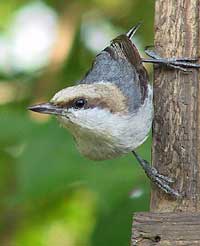 |
|
Trumpet Honeysuckle |
|
I put a arbor over it and have calla lilies in pots on the water side and thunbergia battiscombei on the out side. Looking for the orange clock vine since the battiscombei doesn't get over 3 feet. I believe the orange with the purple will be beautiful and it will cover the arbor. |
I have little changes in the wildlife here in winter. Mostly for what ever reason I see fewer of my year round birds except for the blackbirds which I get about 100 of but I pick up a few species of winter migrants and have lots of migrants that pass through to refuel on their way across the gulf. I get about 50 American Goldfinches and the White-throated Sparrow is my favorite winter migrant. Their song is so sweet and the first sound you hear before it is even light outside. Once we get a cold snap all the butterflies leave. I'm still hoping to have a wintering hummingbird here and maybe some of the western hummingbirds that have been wintering along the coast the last few years.
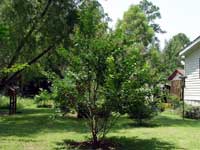 |
My best plant accomplishment is a crepe myrtle tree I rooted from a 8" piece of green wood 2 years ago. It is thriving so I went and bought 2 more since I had to cut down my maple tree in front of the porch due to disease last month. They are a great warbler attracter and fast growing. |
|
I really don't use much fertilizer. Mostly when I pot a plant up I put in Sta Green Bloom Starter 90 day slow release fertilizer in the soil. I may use some miricale grow 2 or 3 times in the entire growing season. The plants in the ground get fertilized in early spring and late summer when the lawn is fertilized. I don't want any plants that have to be pampered. I have far to many plants and other things to do caring for this wildlife habitat. I only use pesticides on ant beds or in winter in the greenhouse only if there is no other way to be rid of the pest and never for any reason near any of the feeding stations or bird baths. |
Am I finished with my habitat?? Never!!!
See more pictures at Donna's
Birds, Flowers and other Wildlife (Web Album)
More about butterfly attractors: Butterfly
page
|
Iochroma Fuchsioides |
|
Sesbania punicea seeds |
||
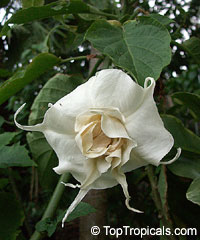 |
A note from TopTropicals: Donna's garden was also destroyed by Hurrican Ivan on Sept 16,
2004... We are very sorry, Donna! We wish you to restore this beauty as soon as
possible and will be happy to help you with more plants. Stay safe. We wish it
never ever happens again. Tatiana & Mike |
